Viola douglasii Steud.
Description. Illustrations: 4 photographs of Viola douglasii and 2 drawings.
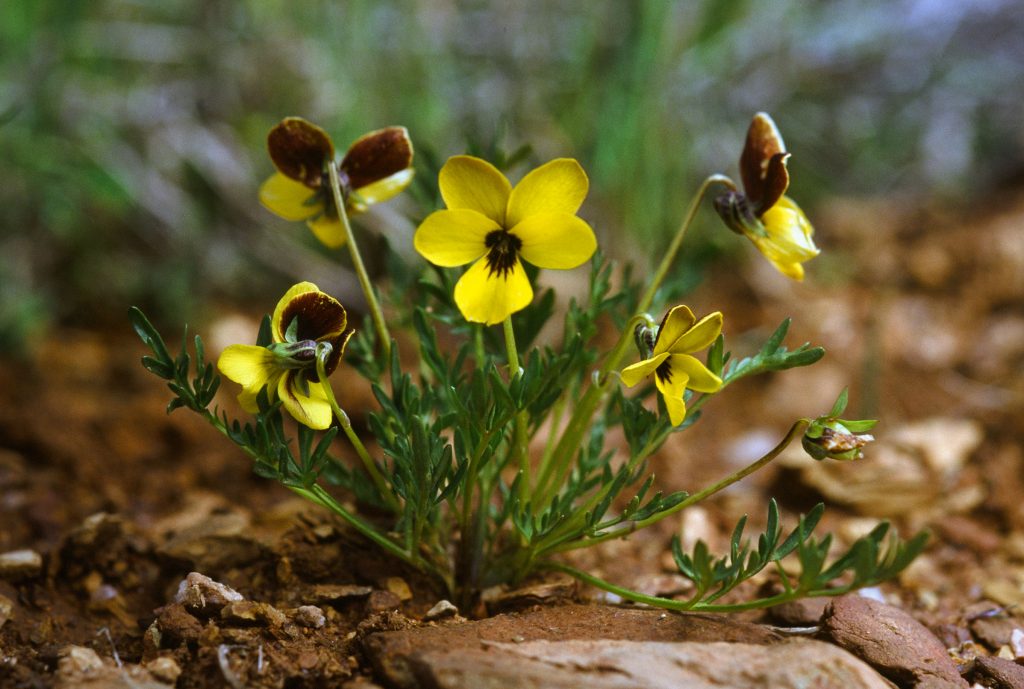
This golden-flowered violet is usually found growing on serpentine, but is not abundant in any location. Its finely divided leaves are gray, very similar to those of V. beckwithii however V. douglasii can be distinguished because the dense pubescence is on both surfaces of the leaves. It occurs from Baja California, Mexico, north to southern Oregon. A species of subsection Chrysanthae, it was originally named by Hooker as V. chrysantha, however this name was shown to be invalid and it was re-named to commemorate its collector David Douglas.
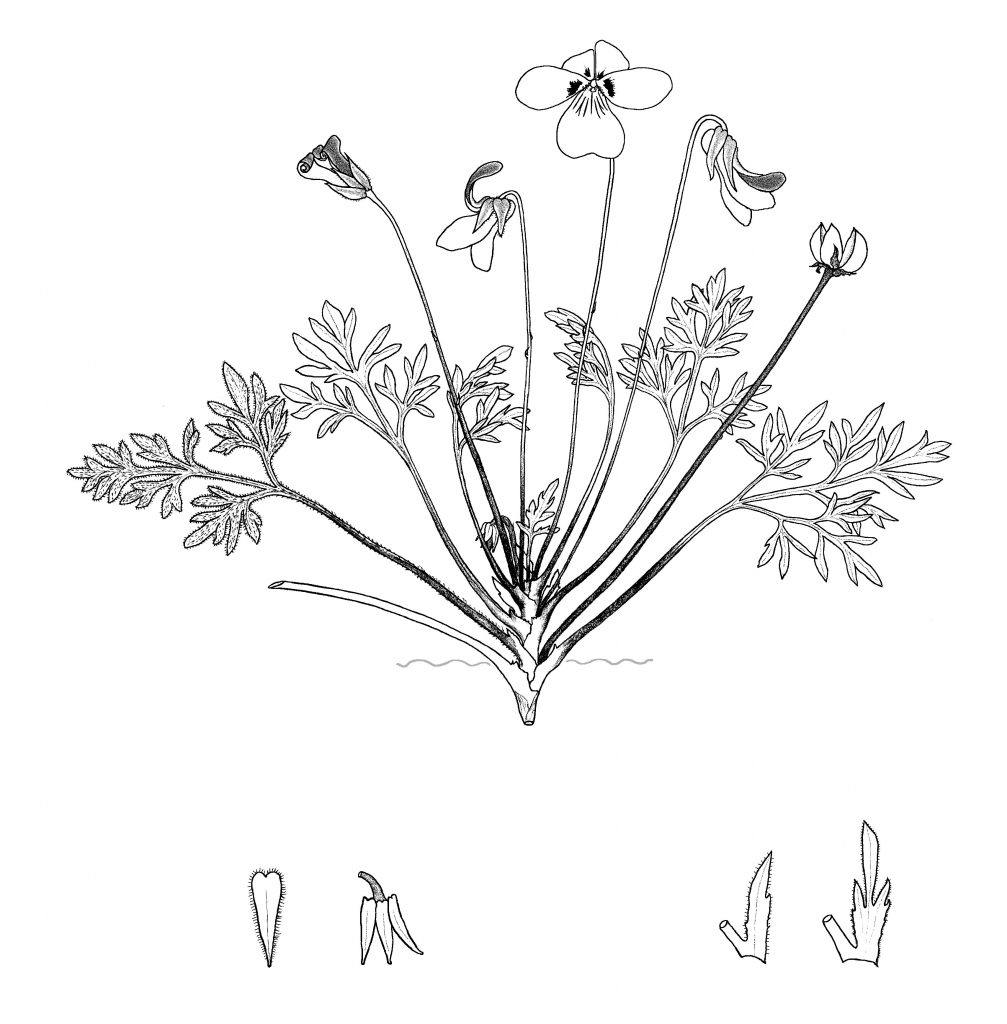
As with other species of this subsection, the plants of V. douglasii are half buried underground, their growing tip being several centimetres below the surface of the soil. The height of the plants depends on the amount of moisture available in its short spring growing season. Evident erect stems, up to 10 cm high, are produced from a short, erect rhizome. Deep penetrating roots grow from the rhizome. The above-ground sections of the stems are, mostly glabrous, with very short internodes. Stipules are adnate to the petiole for their whole length, wrapping aroung the central stem as a fibrous protective sheath persisting after the above ground portion of the plant die down in summer.
Petioles are 2-6 cm long, pubescent, becoming purple towards the base with age. The foliage is herbaceous, minutely pubescent on both upper and lower surfaces, occasionally glabrous. Both basal and cauline leaves are ovate in outline, 2-5 cm long. Leaf blades are divided into three or five segments, each segment again divided into two to five parts, their tips sometimes divided a third time. The resulting segments are very narrow, linear to lanceolate. Cauline stipules are lanceolate, entire to incised, ciliate, adnate at the base.
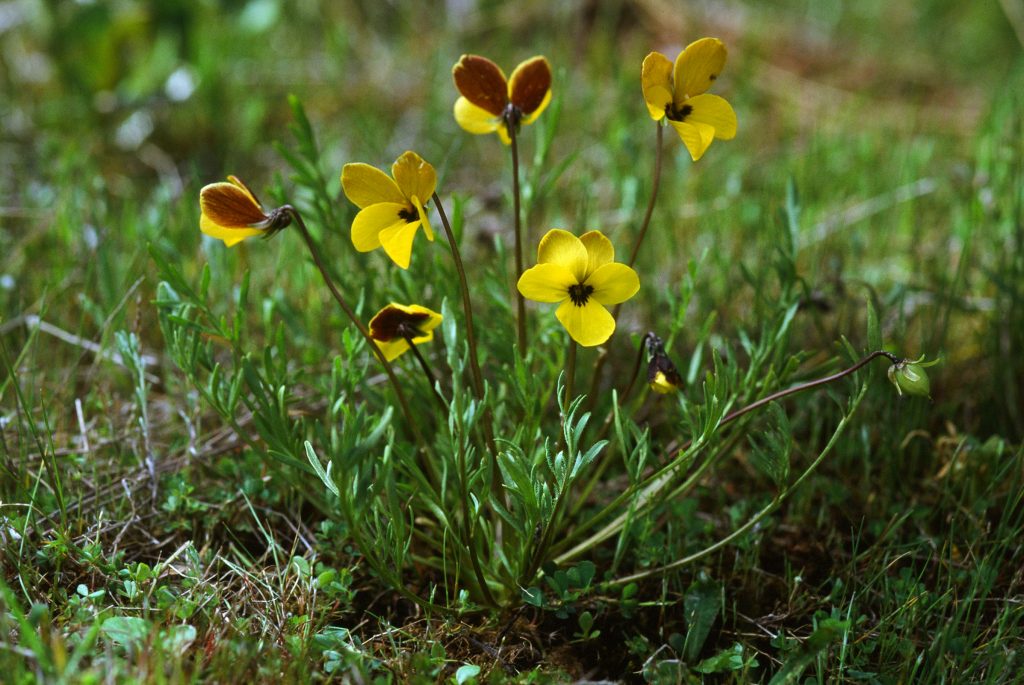
This is one of the earliest violets to flower in spring. Relatively long peduncles from the axils of the stem leaves carry the flowers above the leaves. These peduncles are sparcely pubescent, with age becoming purple; the bracteoles just above the middle are purple, ciliate and 1.5 mm long. The orange-yellow flowers are slightly less than 2 cm in size, with dark rust to almost black on the back of the two upper petals. On the inside of the flower, there are yellow clavate hairs and heavy black-purple markings near the base of the lateral petals and the same dark black-purple guidelines on the lowest petal; the ovary is green, glabrous, with dense, relatively long hairs on all sides of the head of the style; the spur is green, saccate, 1 mm long x 3 mm wide. The calyx densely is pubescent around margins of sepals and appendages, 5-8 mm long; sepals wide at top with an obvious midline; auricles short, indented to form two lobes.
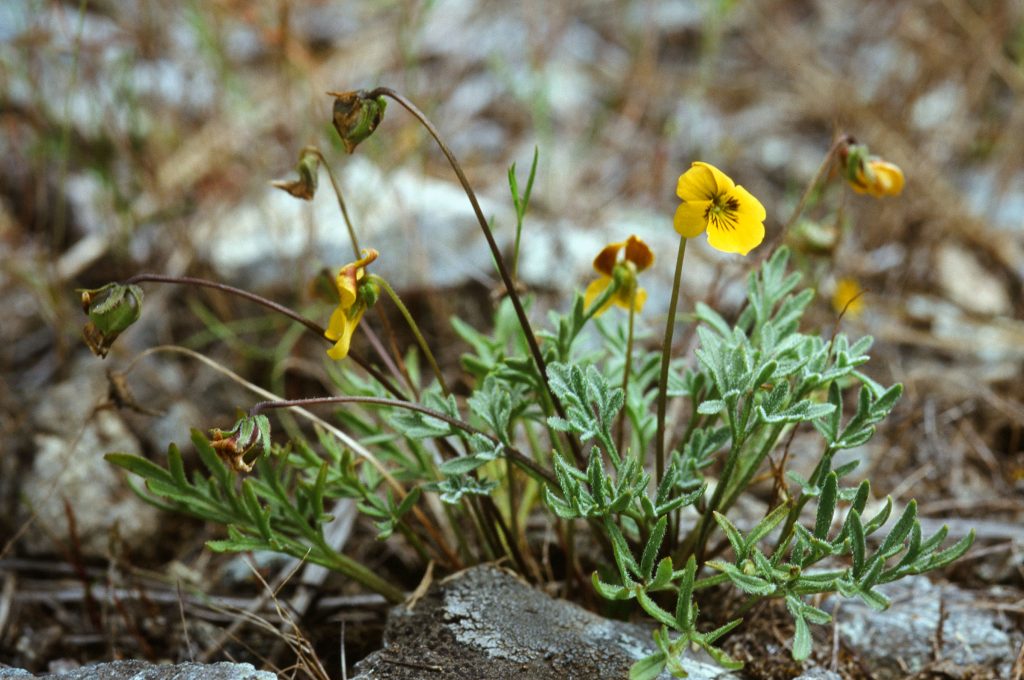
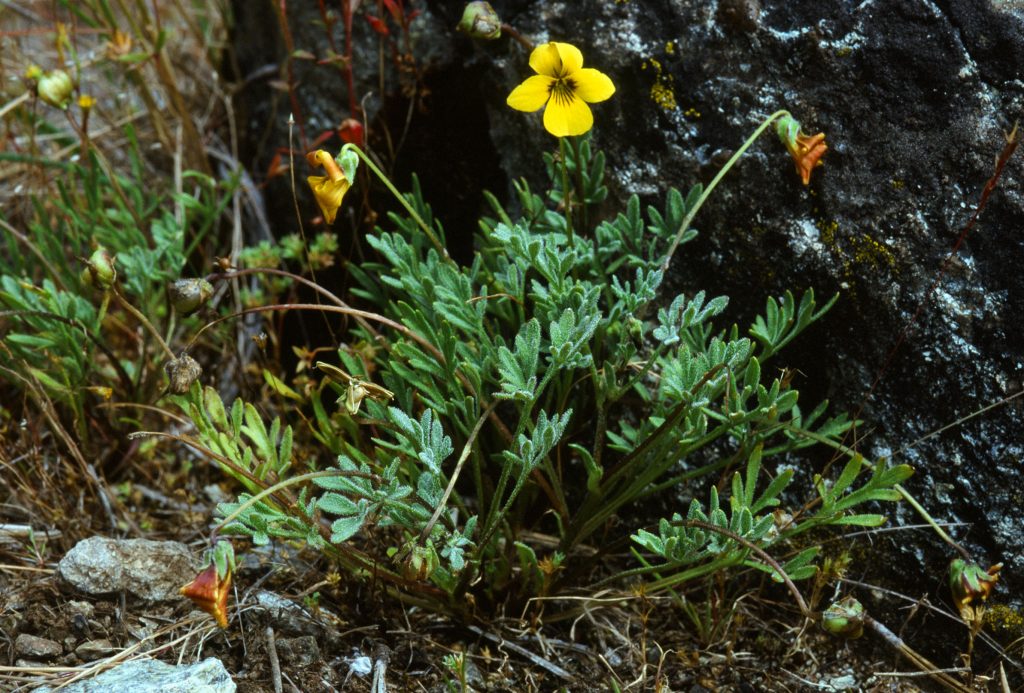
Seed capsules are green, round to oblong, 5–12 mm long, glabrous: seeds pale cream, 3.5x 1.9-2.0 mm, favored by small rodents. No closed (cleistogamous) flowers are produced.
V. douglasii is found growing in sunny locations, usually on serpentine. Serpentenite rock weathers to an impoverished orange clay soil that few plants will tolerate because it contains toxic levels of chromium, iron, magnesium and nickel. The scarcity of calcium underlies the effects of serpentine soils, the nutrient deficiency of this element especially seems to be the most crucial factor limiting plant tolerance to these soils. The locations are characterised by distinctive dwarfed marker species, usually with gray leaves (Pinus jeffreyi, P. sabiniana, Cupressus sargentii, Arctostaphylus, Libocedrus decurrens) but mainly by their open nature due to the sparseness of vegetation. Winter and spring precipitation, often as snow, keeps the areas moist in early spring, but moisture dries up quickly as the summer heat arrives. The violets die off as soon as their seeds are dispersed, becoming dormant until the following spring. As with other members of this subsection, this is a difficult violet species to cultivate. Scree conditions in a sand-bed that is kept almost dry in summer can be successful.
It occurs in Western California in the Inner Coast Ranges and foothills of the Sierra Nevada, Transverse and Peninsula Ranges, surrounding but excluding the great Central Valley, extending south into Baja California and north to the Klamath Ranges of southwestern Oregon. Californian counties: Butte, Kern, Monteray, Napa, San Bernardino, San Diego, San Mateo, Santa Clara, Shasta and Siskiyou Co.
Oregon: Jackson County. Elevation: 150–2300 m.
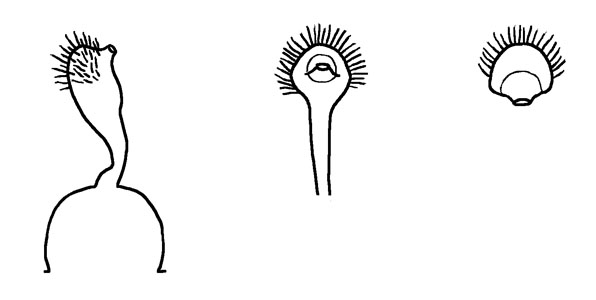
Nomenclature and Taxonomy:
Sect. Chamaemelanium subsect. Chrysanthae (Clausen, 1964).
Viola douglasii Steud. Nomencl. Bot. [Steudel], ed. 2: 771, 1841.
Syn. Viola chrysantha Hook. Icones Plantarum, t. 49. 1837. Viola chrysantha Hook. Collected by Douglas at Monteray, on the coast of California, about 1830-1831.
In its southern range south of San Francisco Bay, V. douglasii has a tetraploid chromosome number of 2n=4x=24, where x=6, the base chromosome number of this subsection. Northwards its chromosome number is doubled, and it is a octoploid, 2n=8x=48 (Clausen, 1964). Chromosome analyses shows that V. douglasii originated by inter-subsectional hybridization between unidentified members of subsection Canadenses (maternal parent) and subsection Nuttallianae (paternal parent), followed by allopolyploidy, a phenomenon that seems common within section Chamaemelanium and has occurred repeatedly in the last 9 million years. The allopolyploidy event has been estimated for V. douglasii at 5.6 million years ago.
V. douglasii hybridizes with species of the Purpureae and the Nuttallianae. In some locations, flowers have heavy black markings at the base of all petals, but more particularly on the lowest one, strongly resembling the markings of V. pedunculata, with which it may have hybridized. V. douglasii and V. pedunculata are closely related, their main distinction is the leaf shape, while the geophytic habit, absence of cleistogamous flowers and flower colour are basically the same. Their distribution overlaps narrowly in the southern range of V. douglasii. Viola pedunculata is more nearly coastal in its distribution, a strictly open-ground and abundant species, while V. douglasii keeps in the main to the interior in low altitude mountains, away from coastal fogs, also very widely dispersed but never abundant.
The colour illustrations of V. douglasii and V. sheltonii are reversed in Doretta Klaber’s book, p. 176.